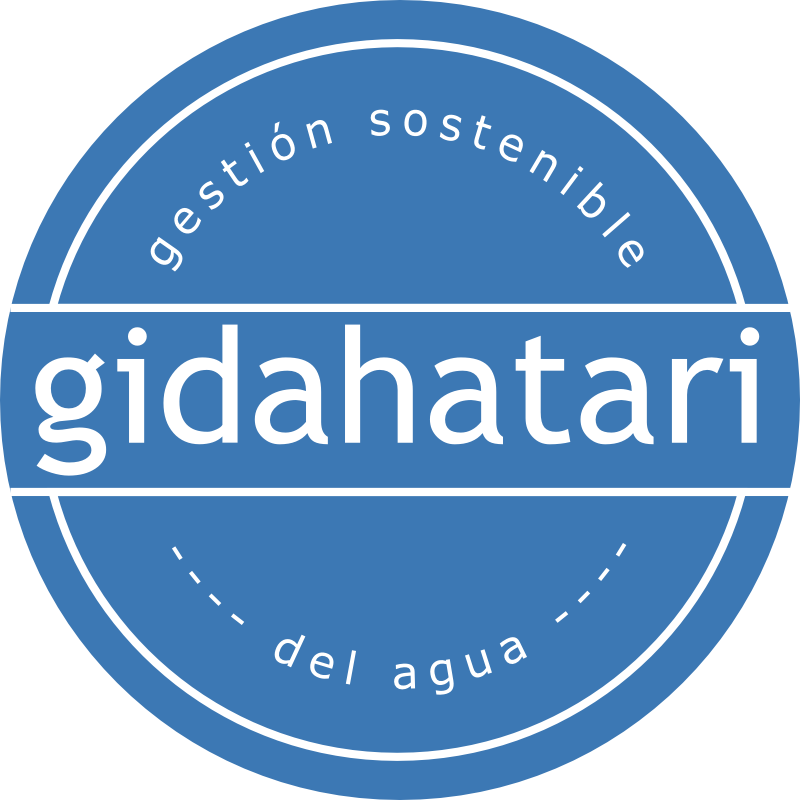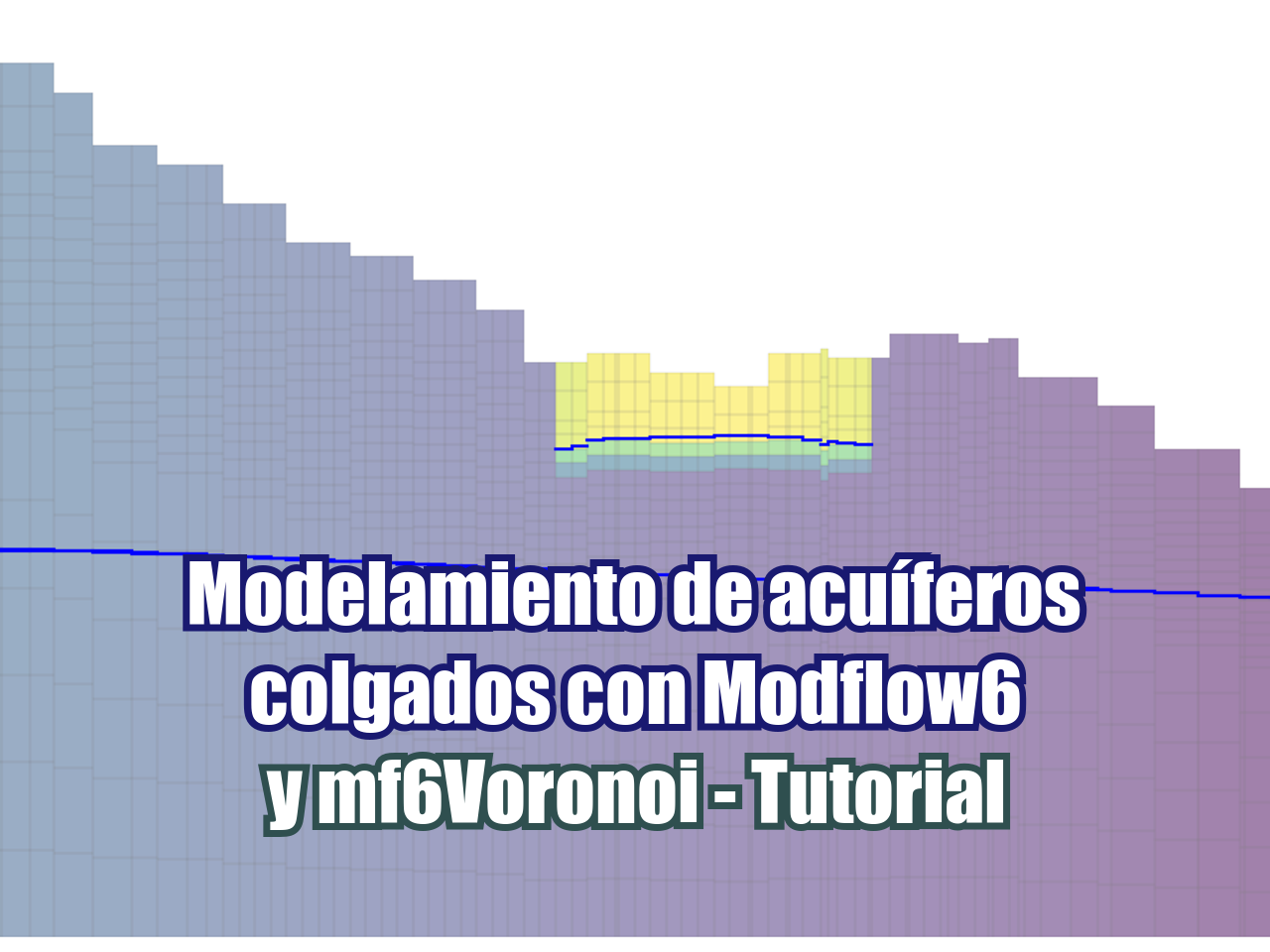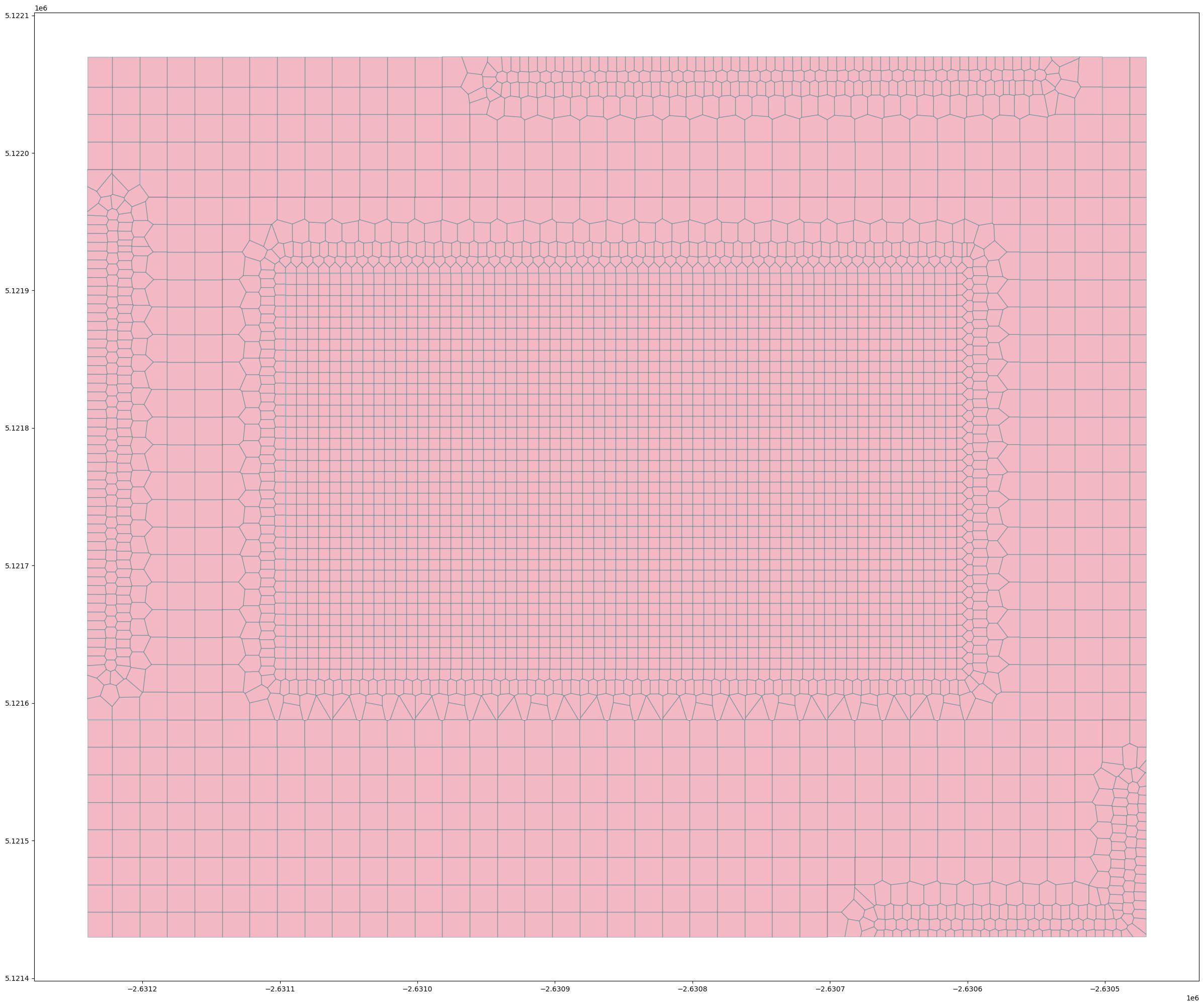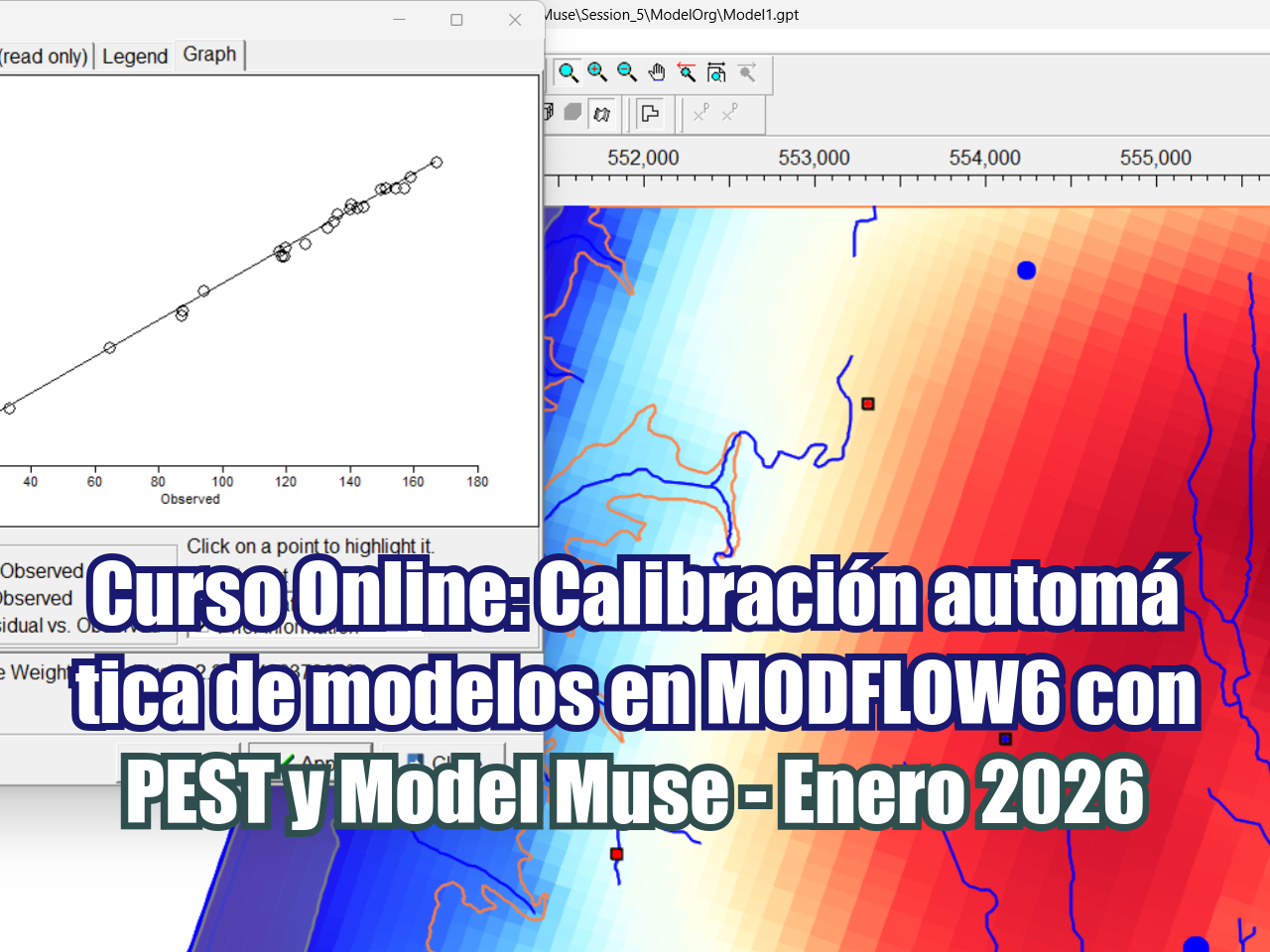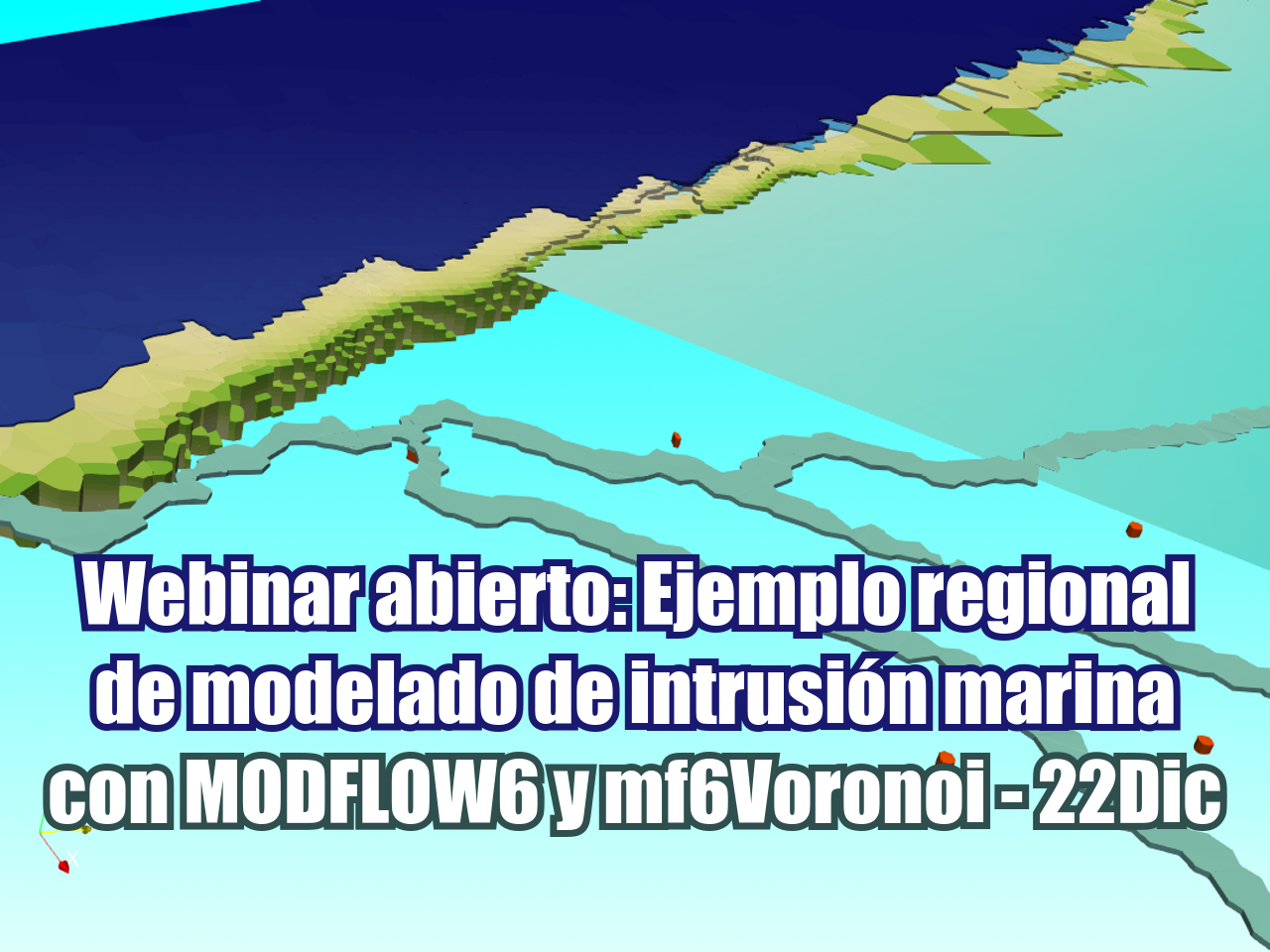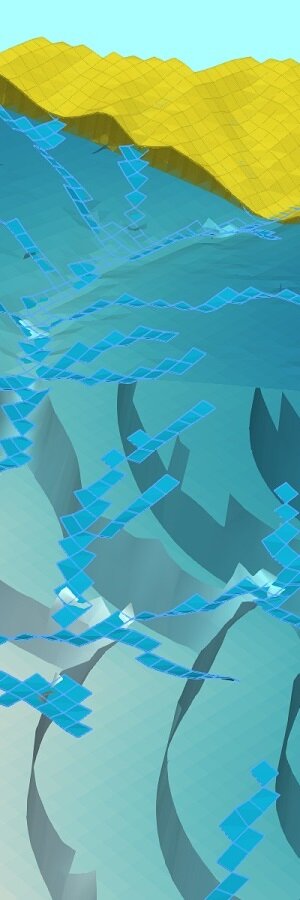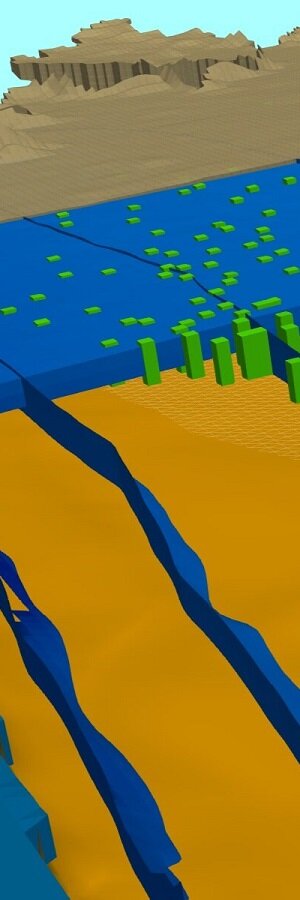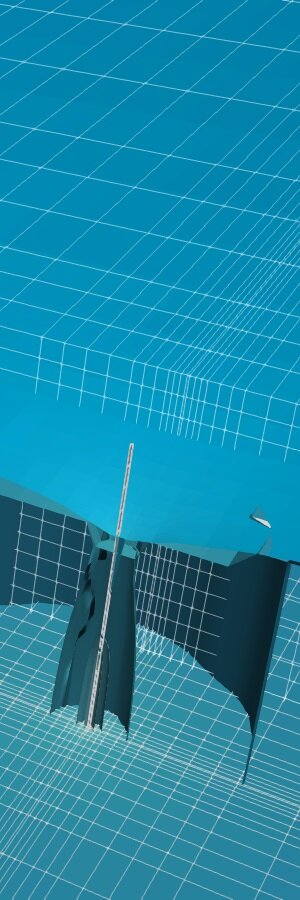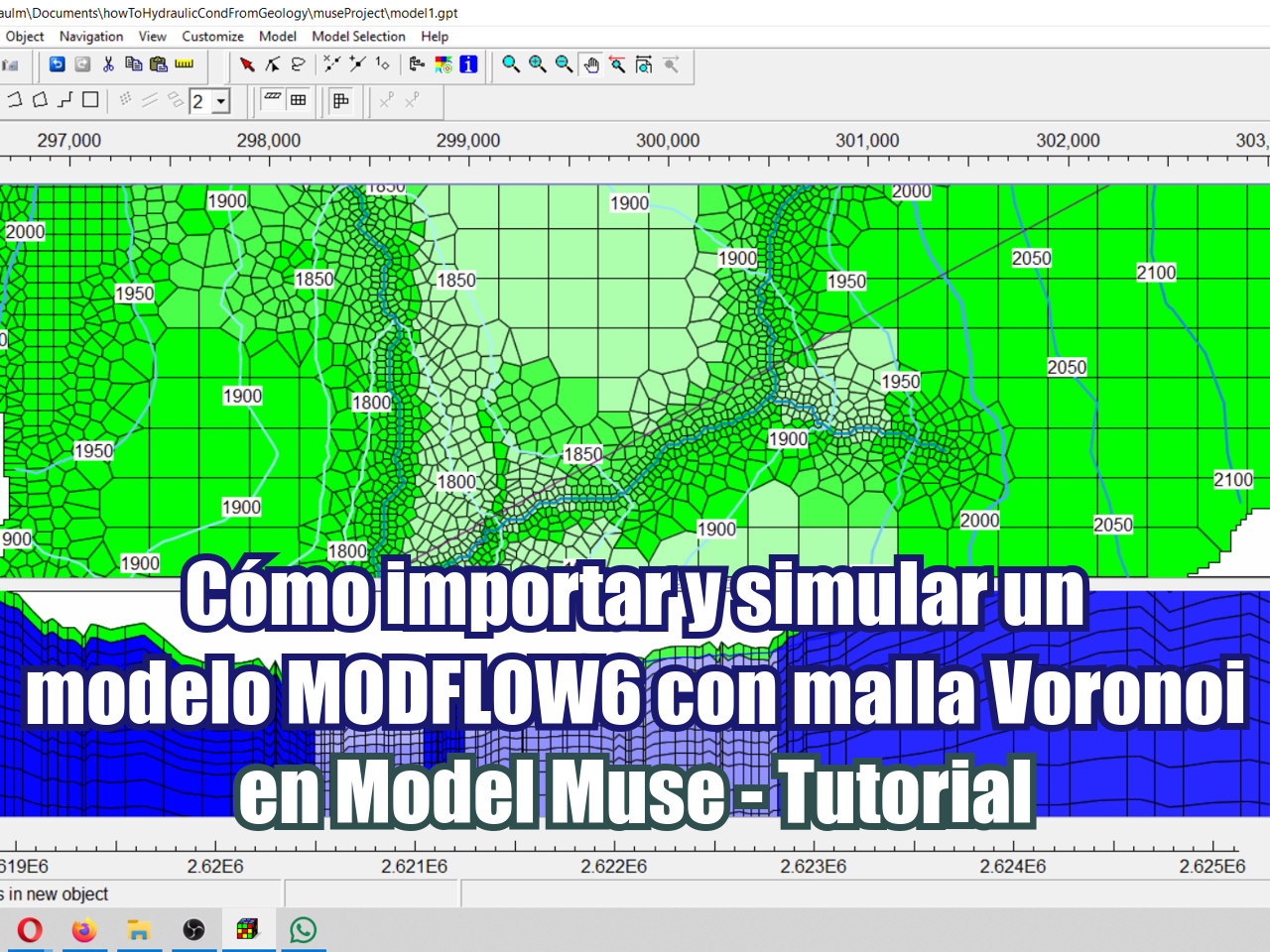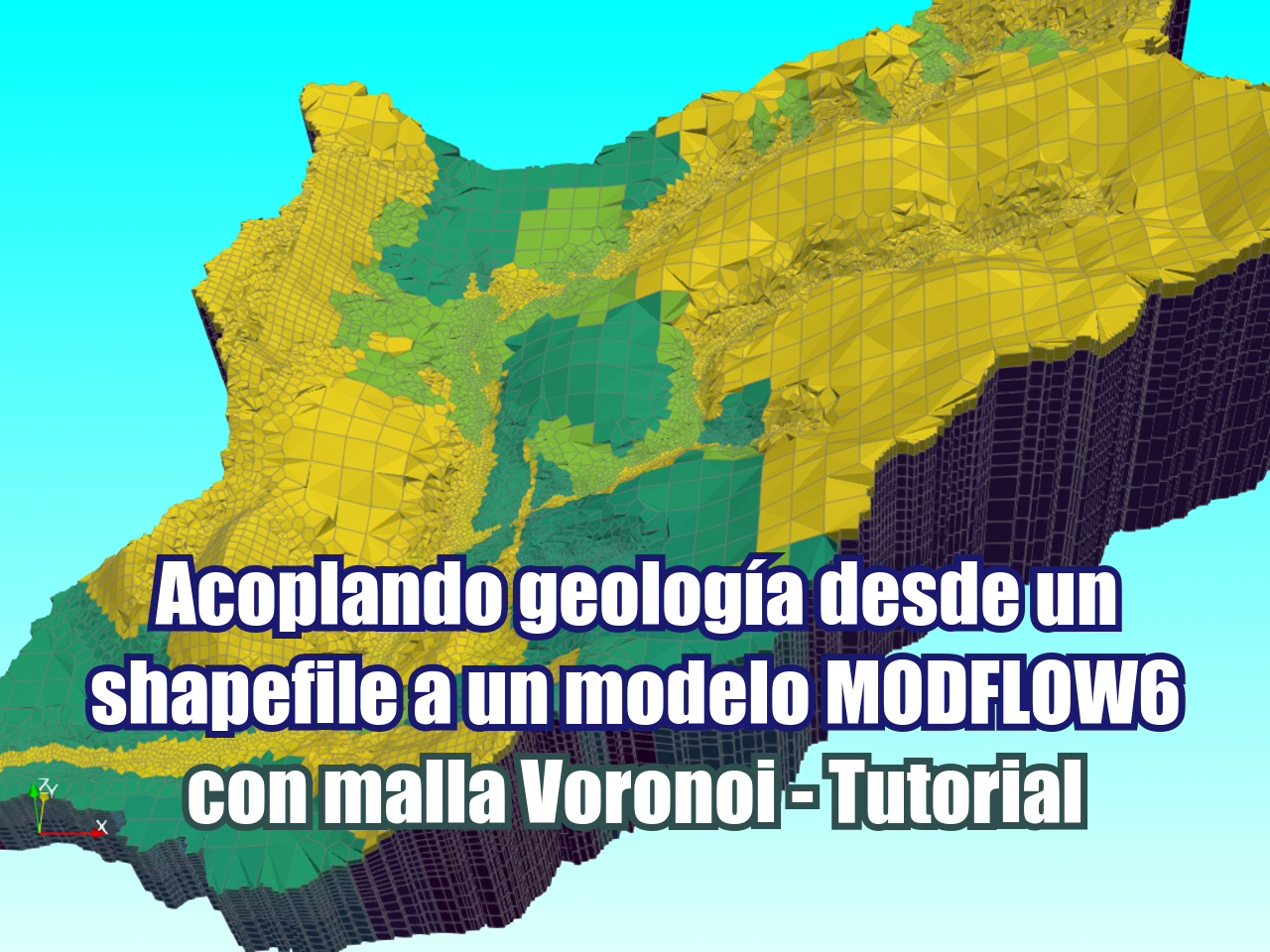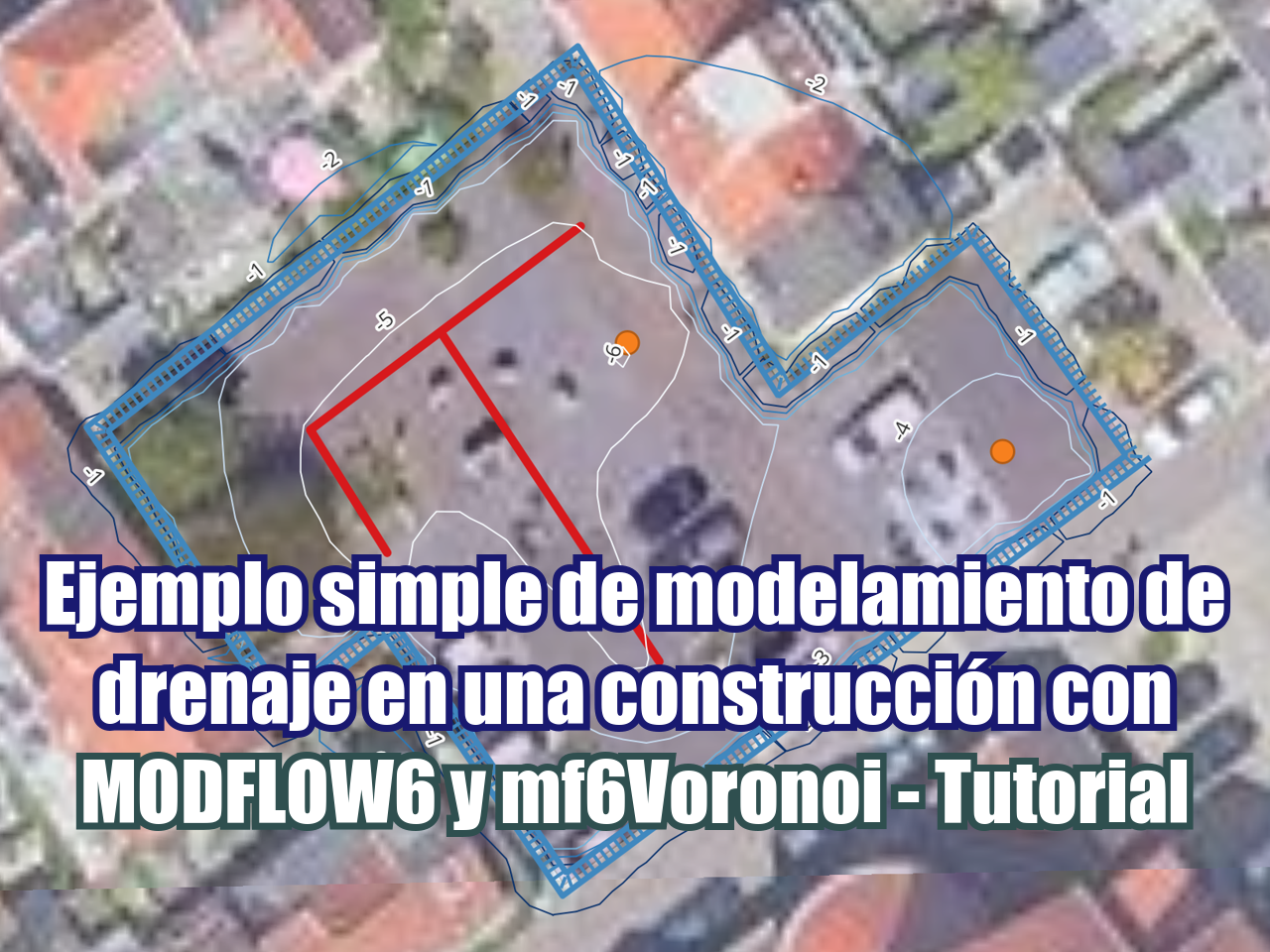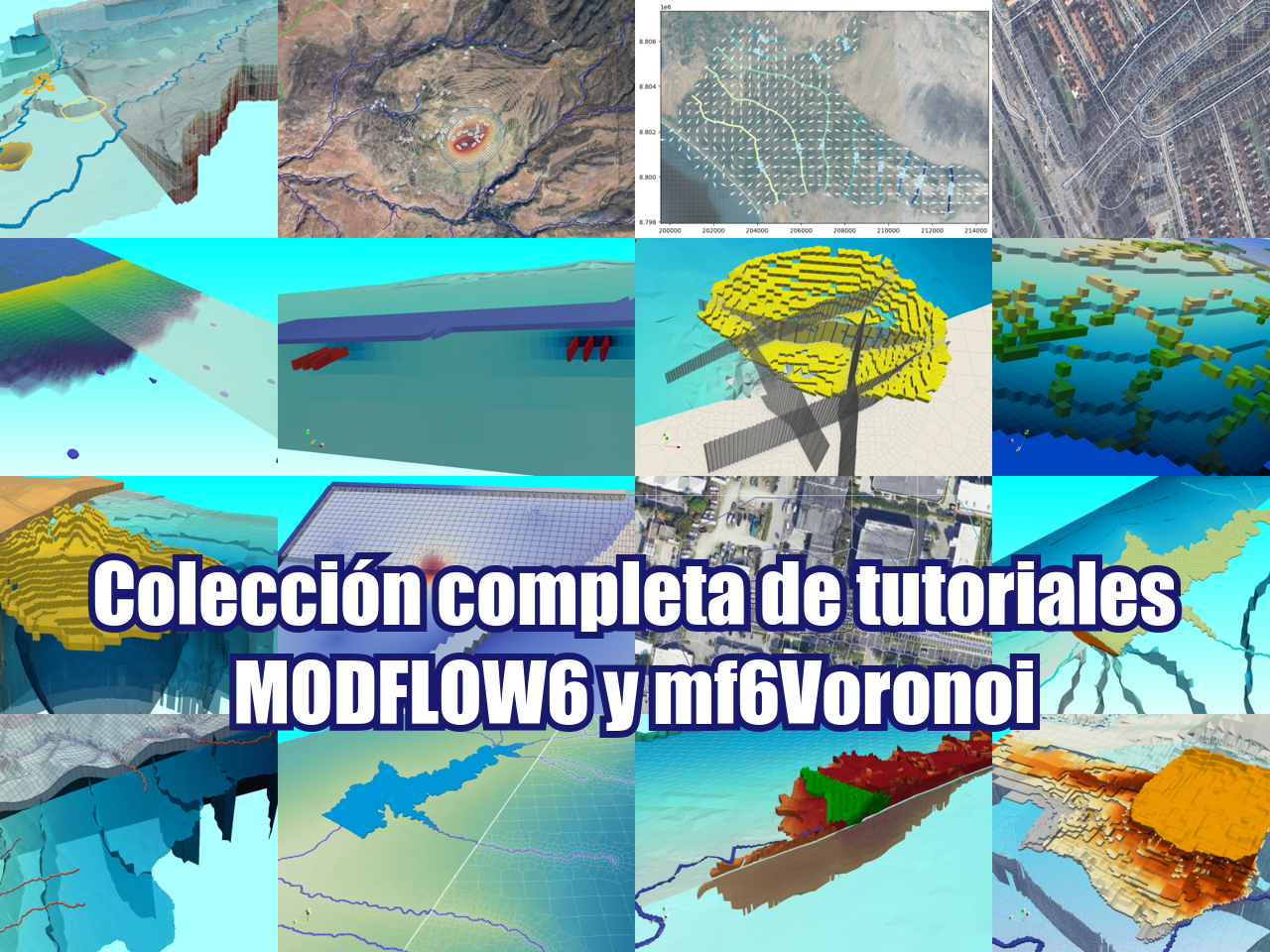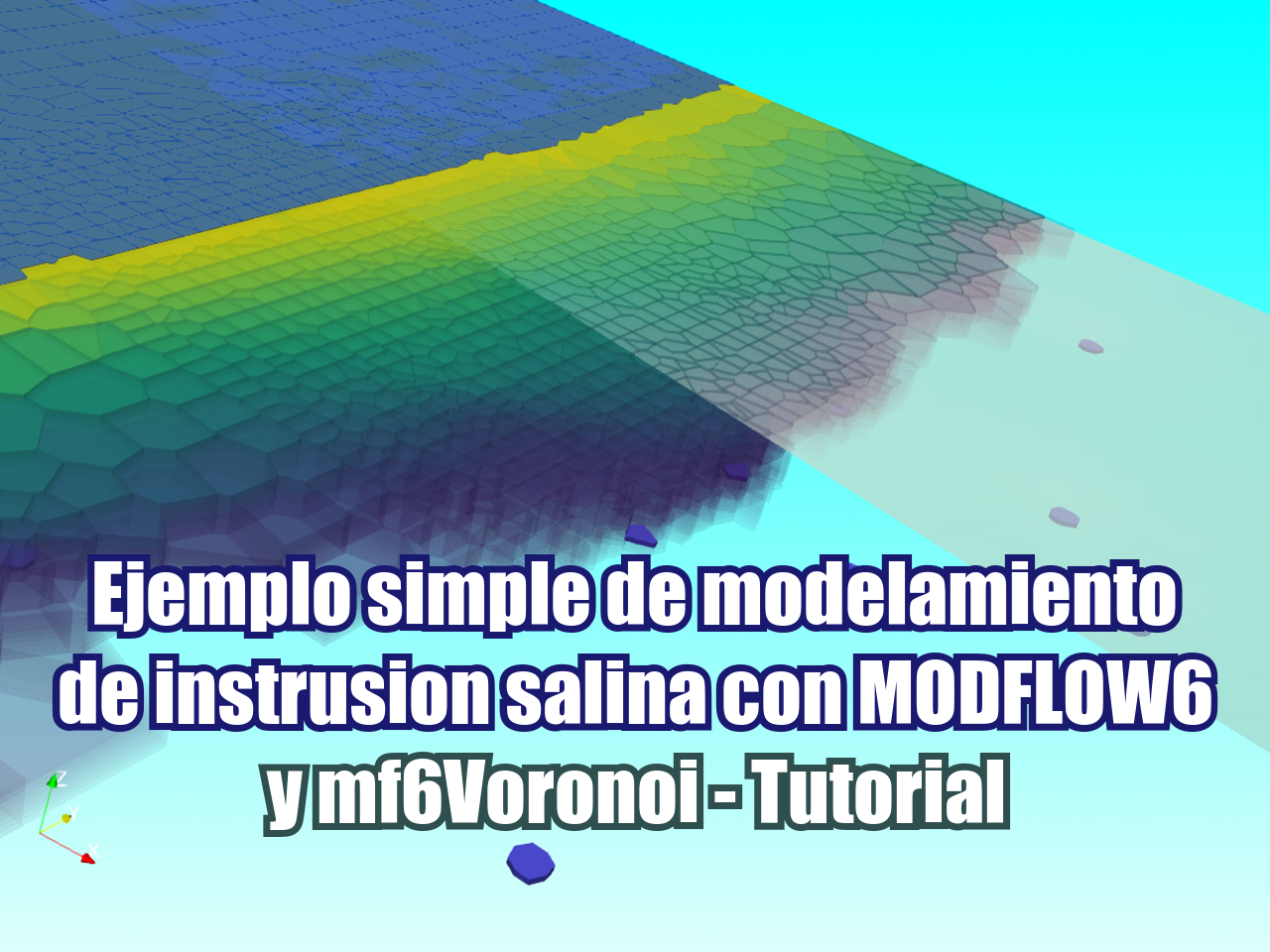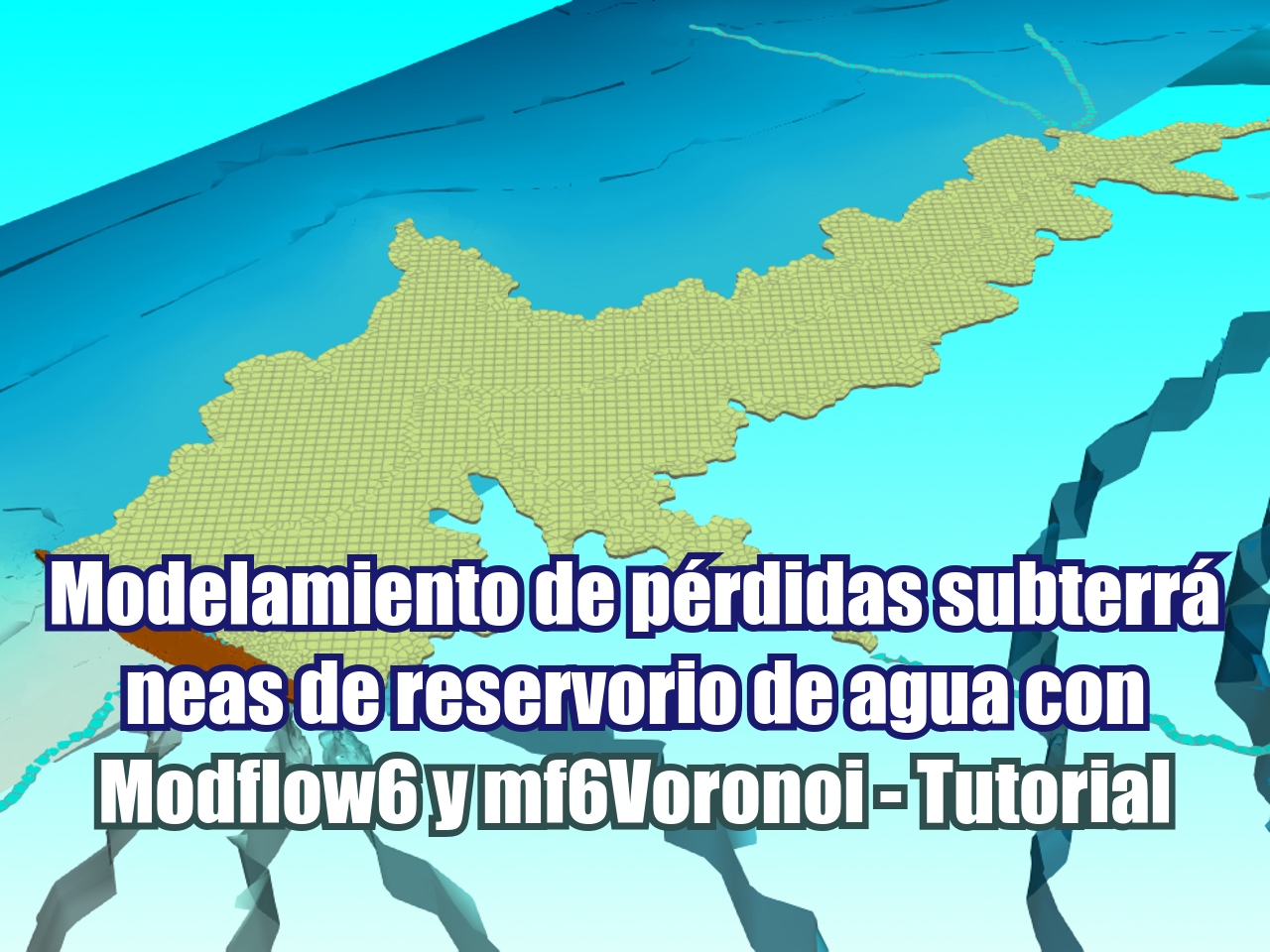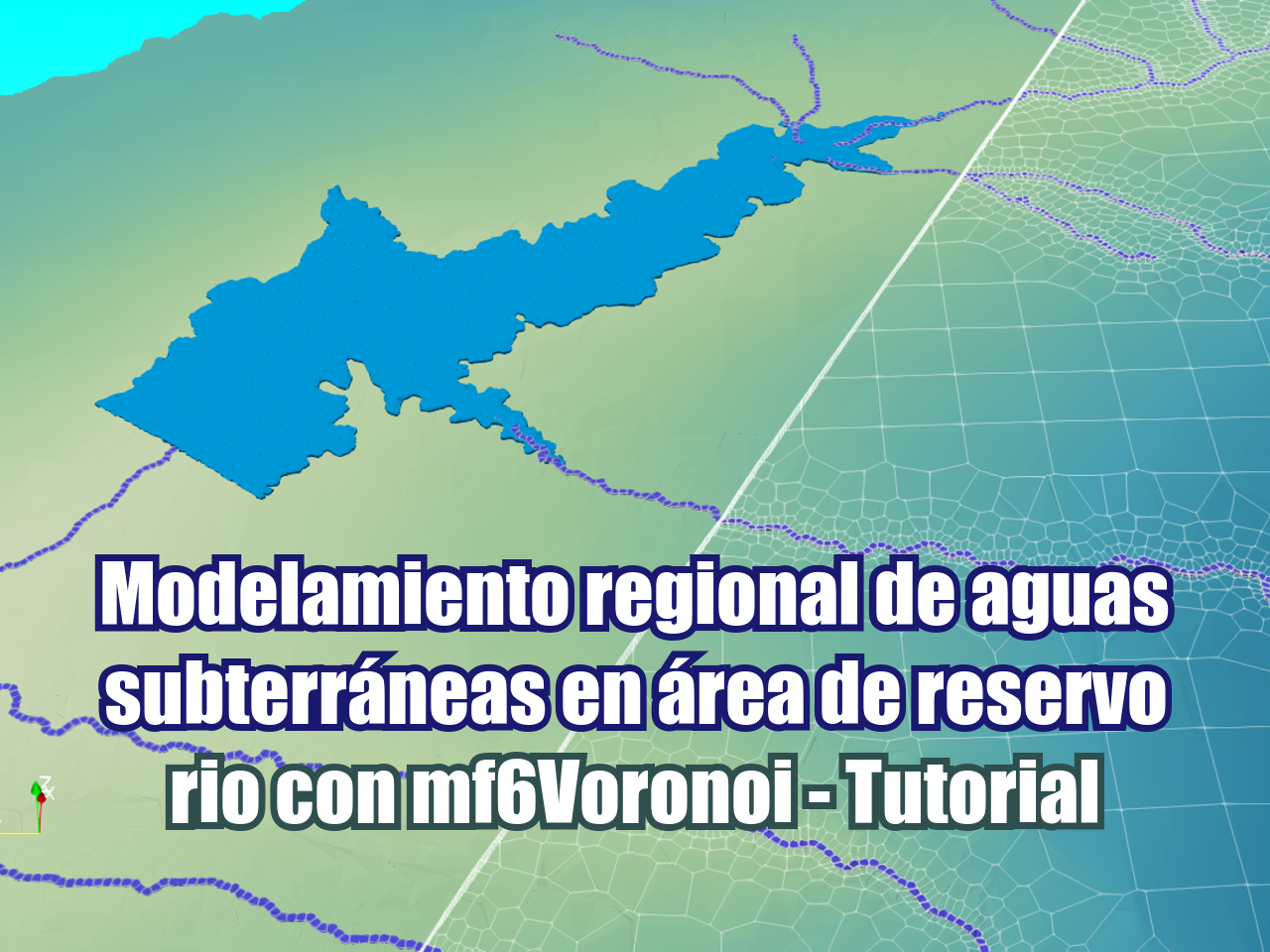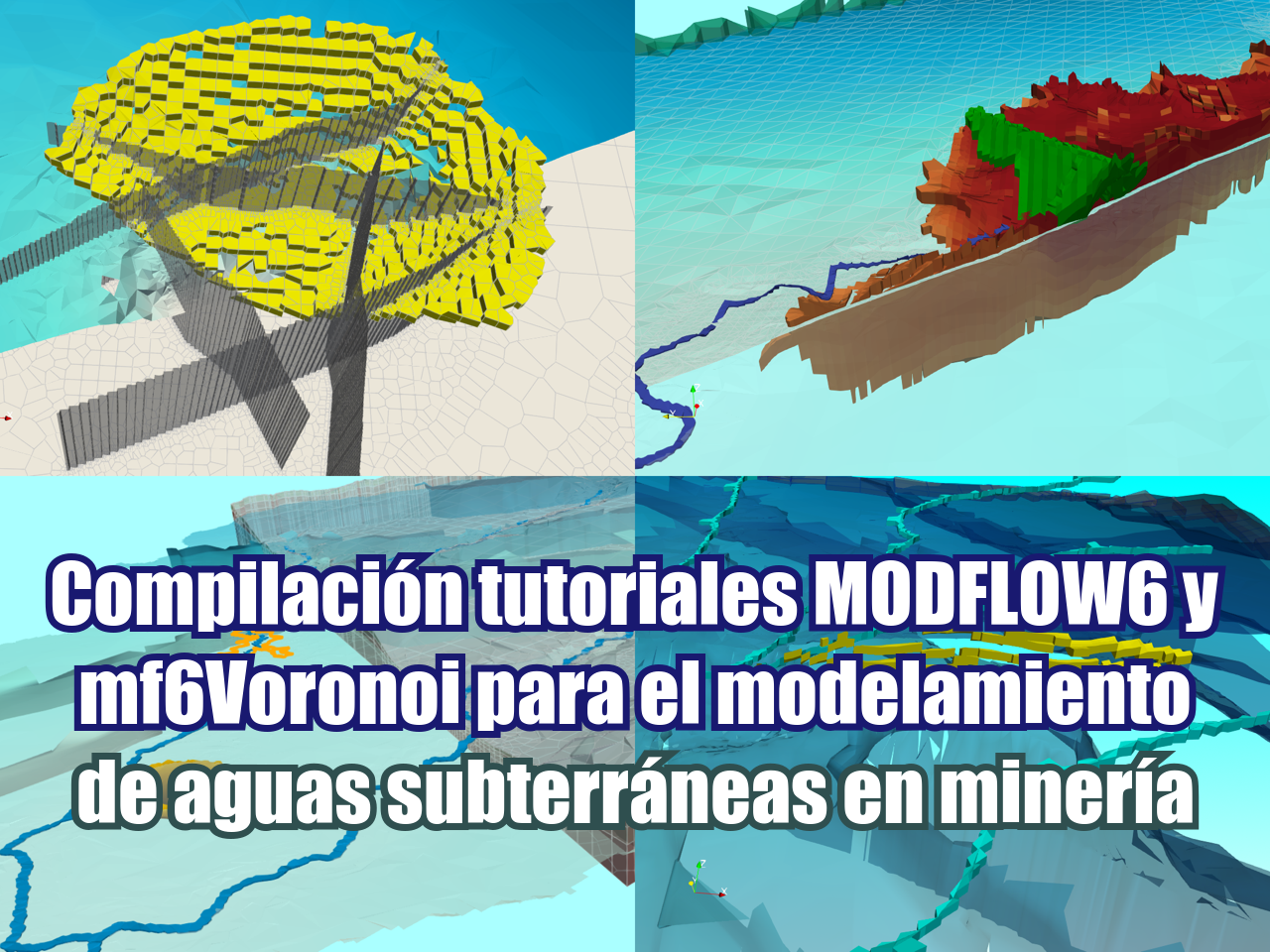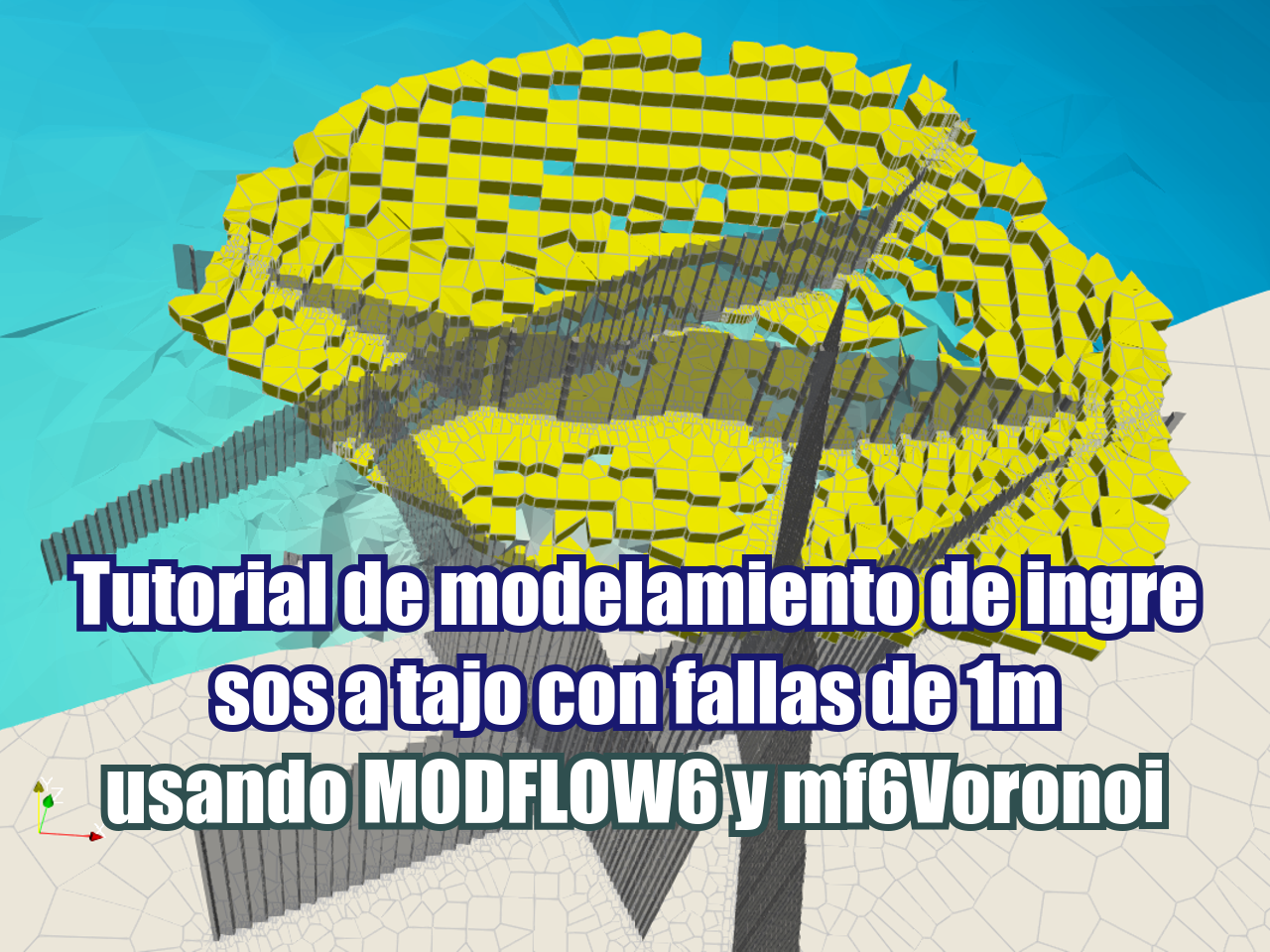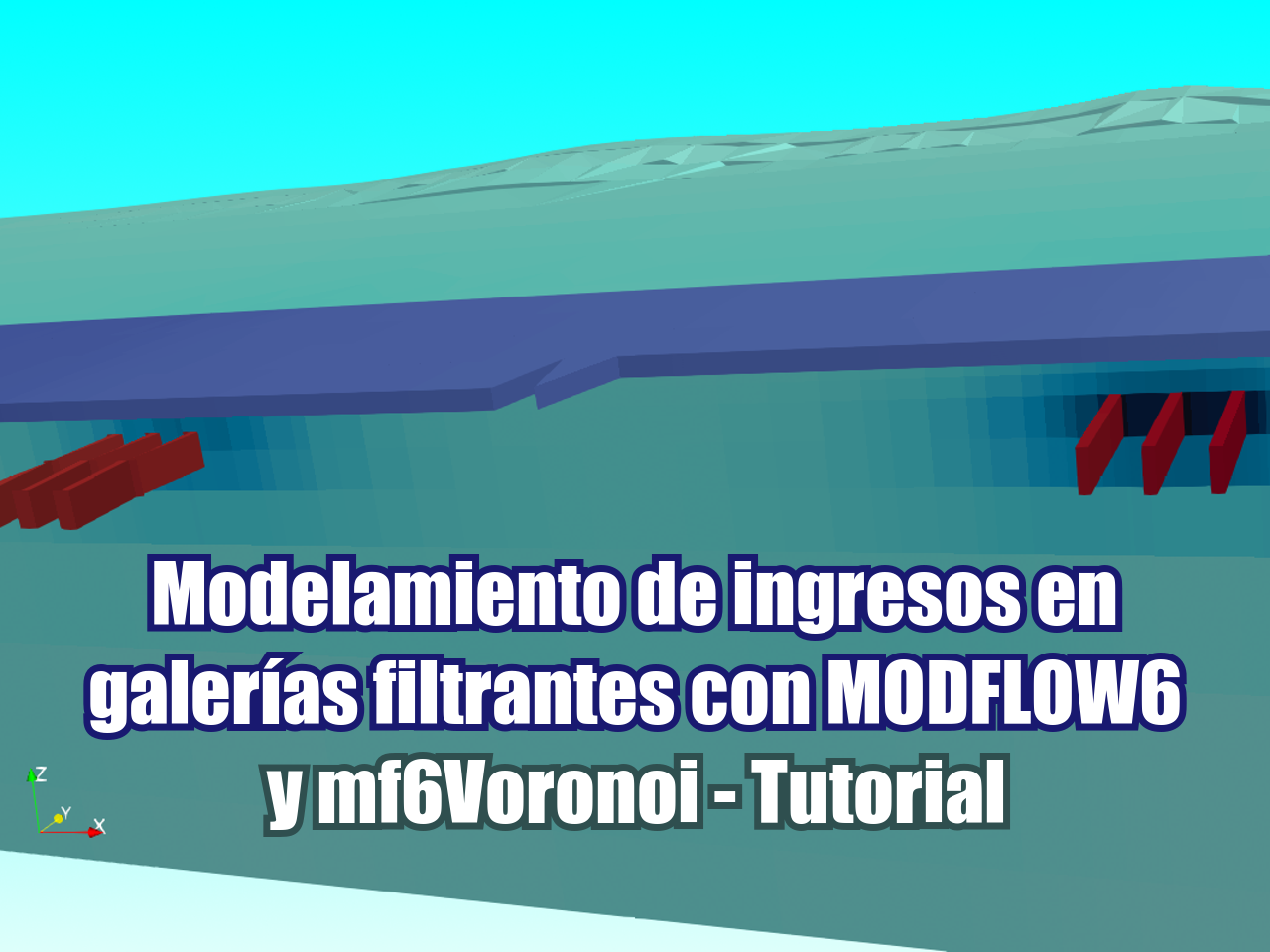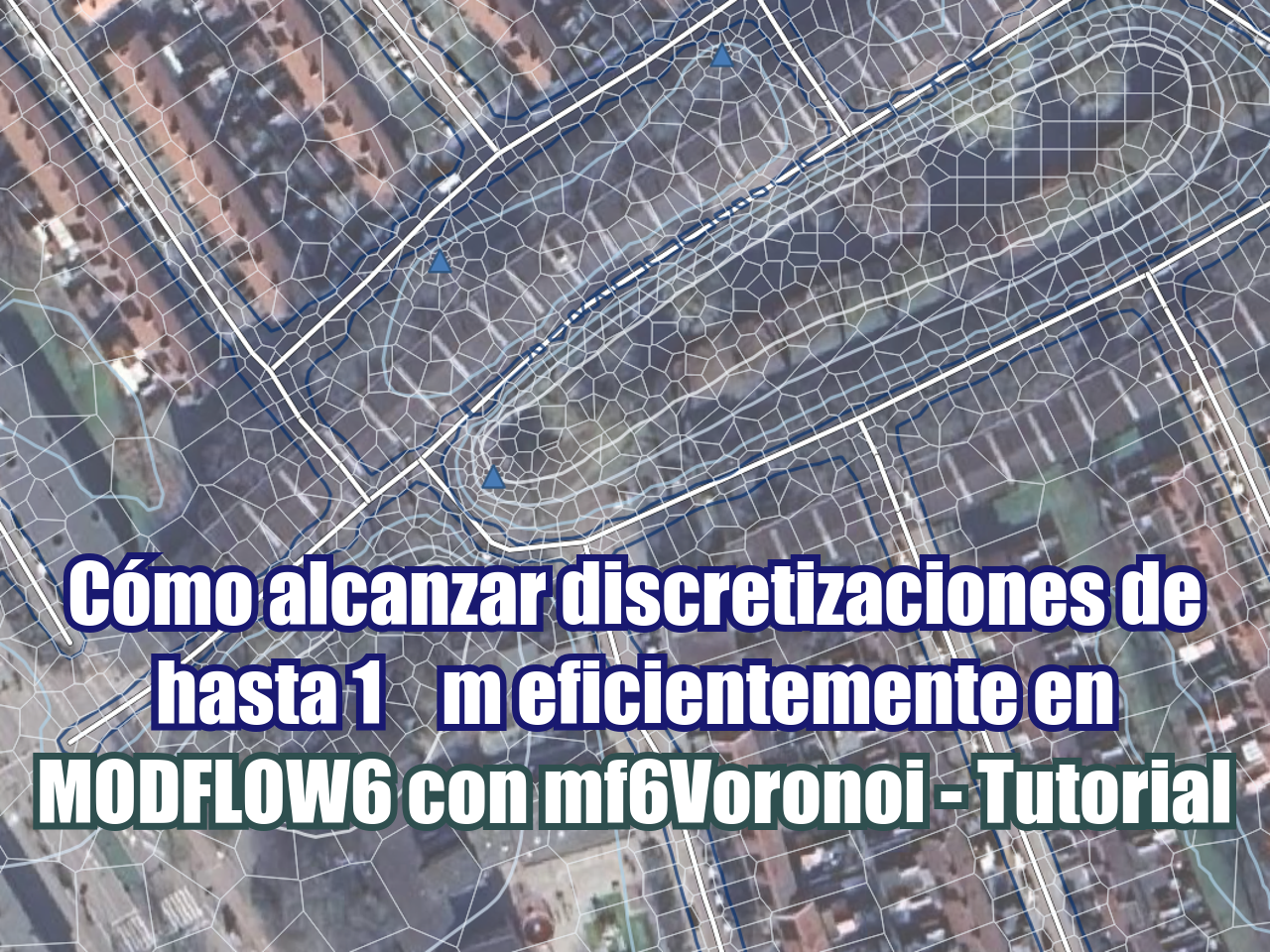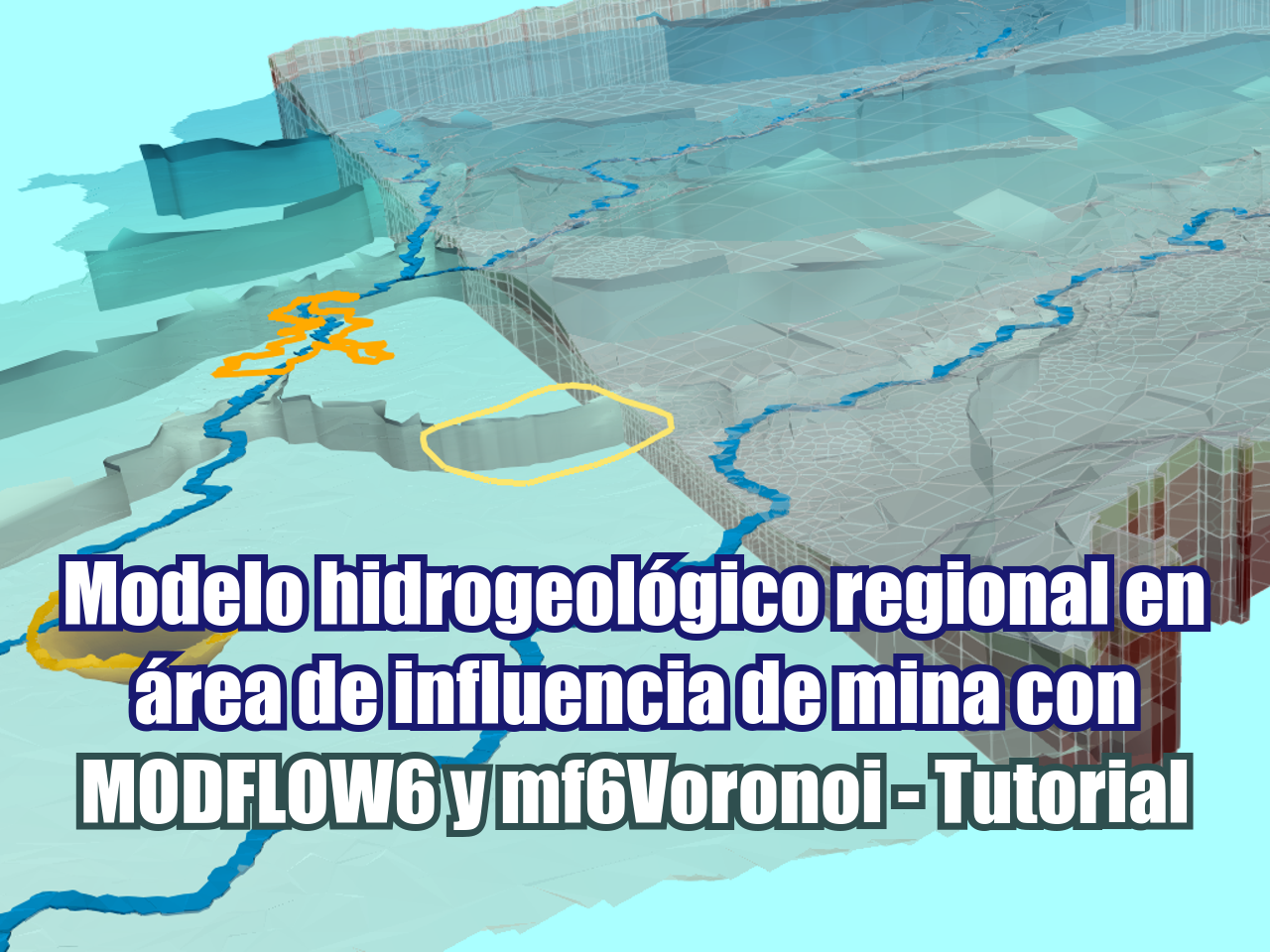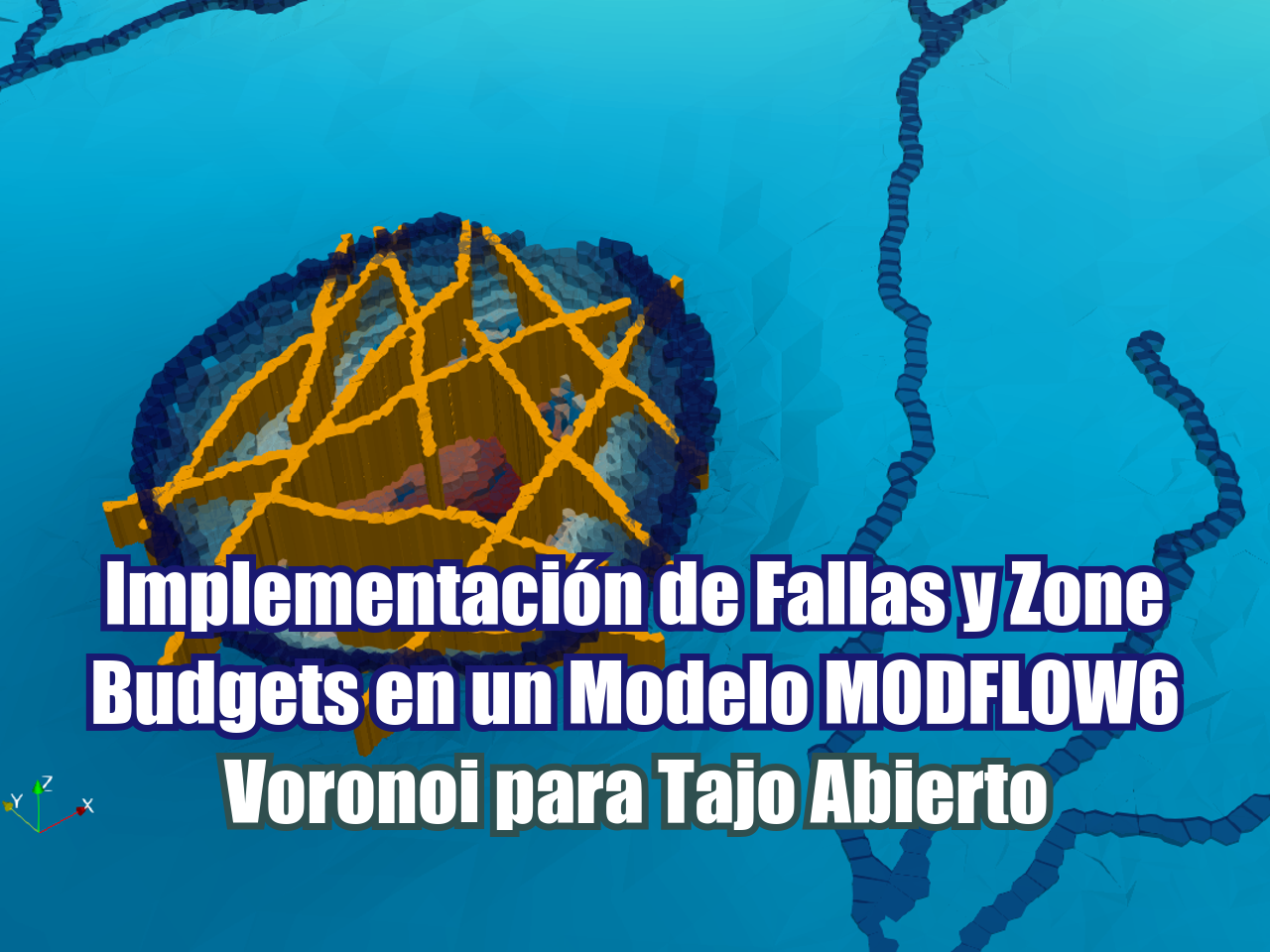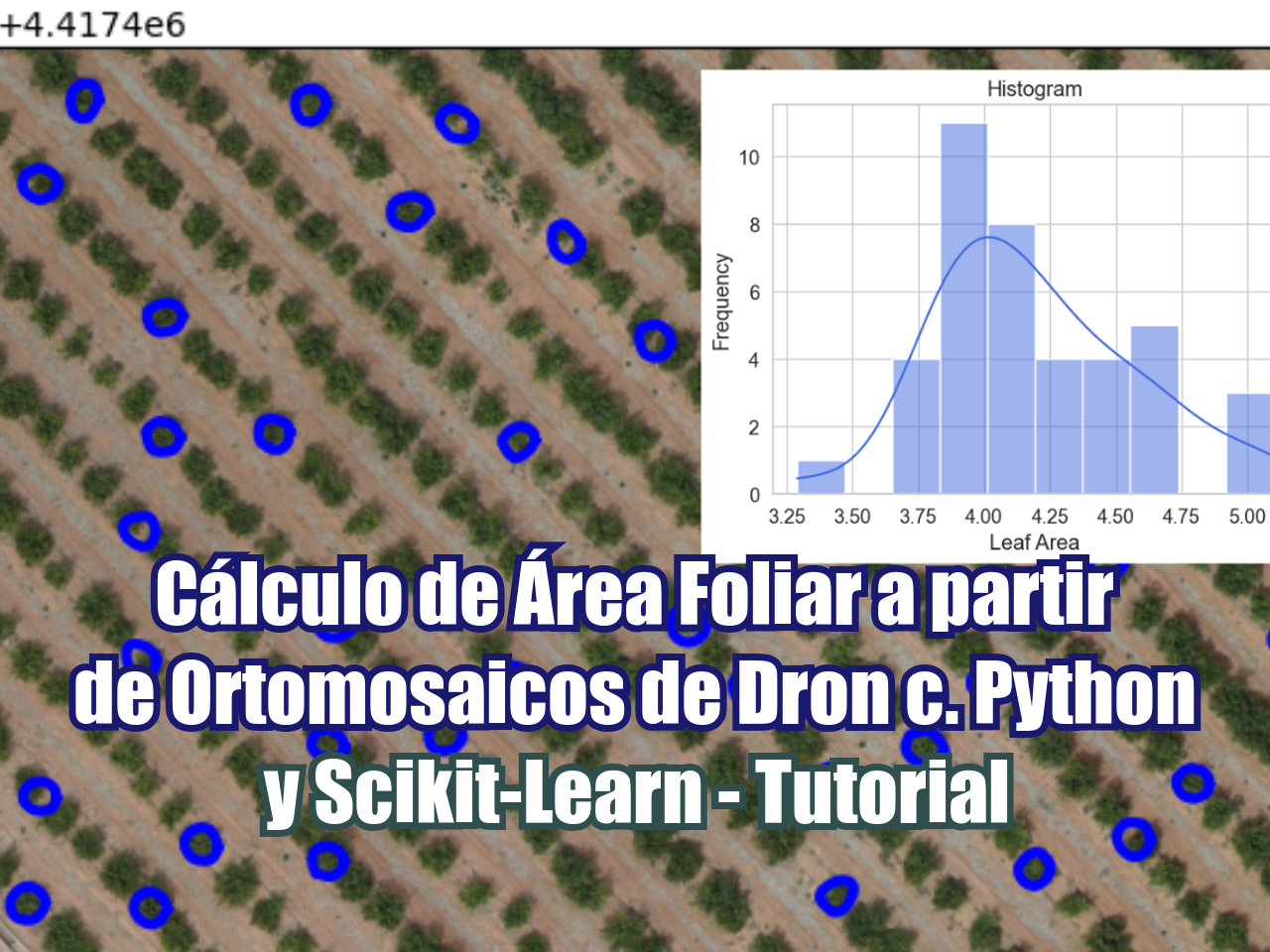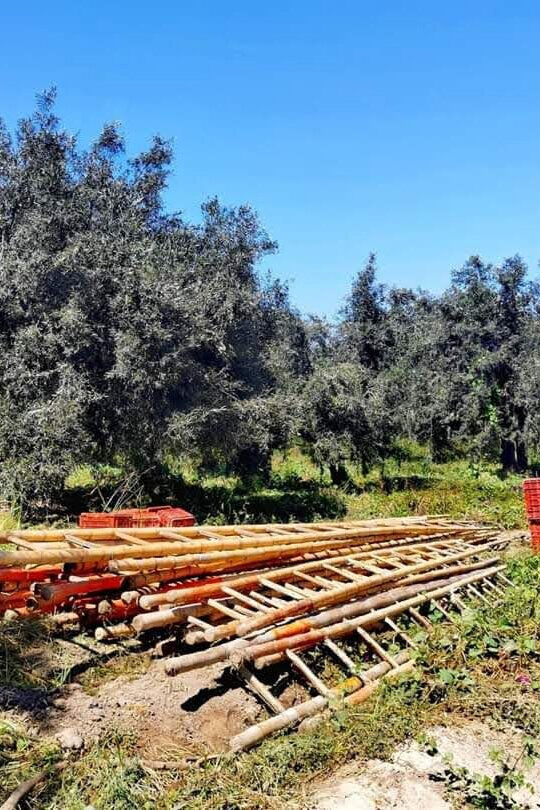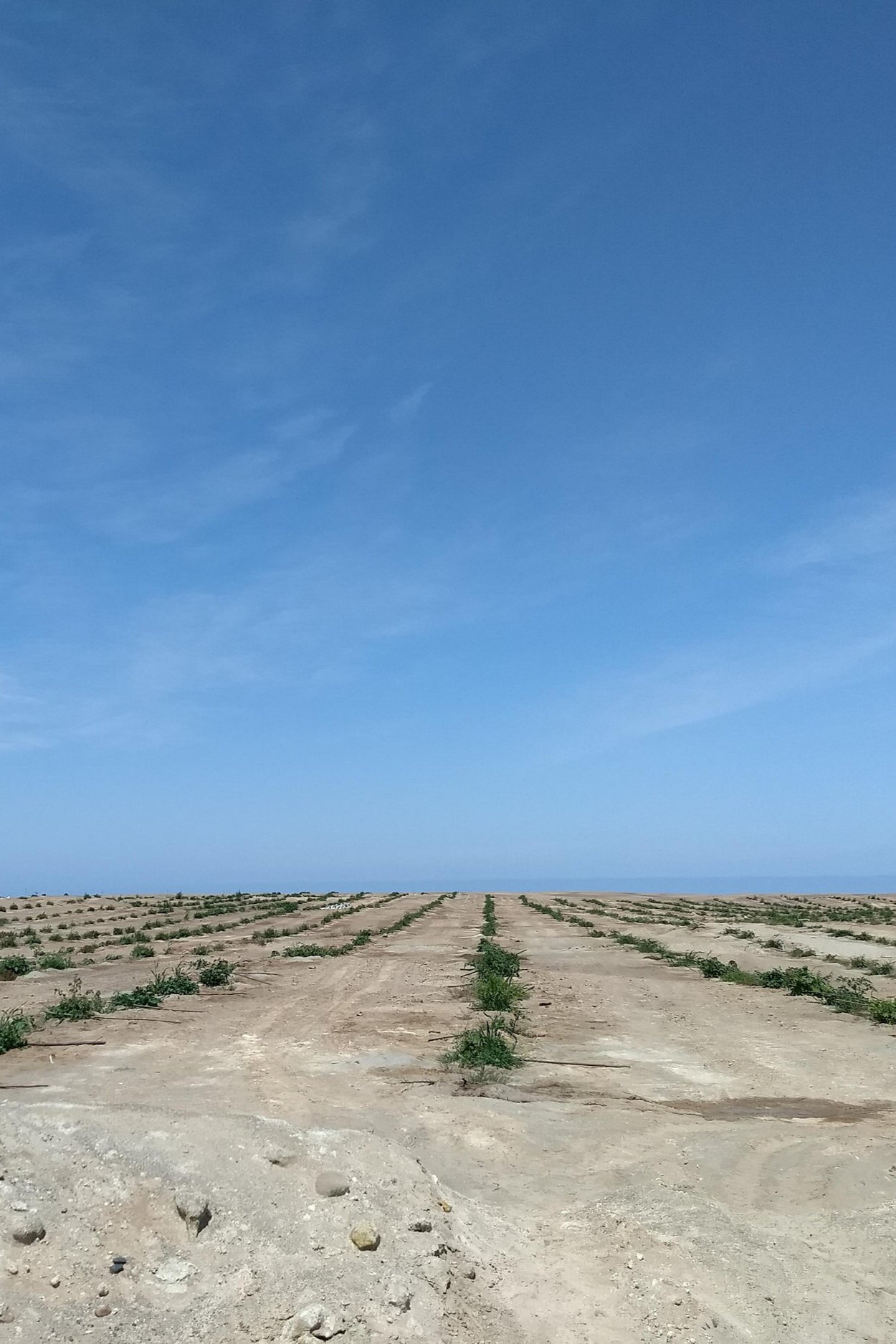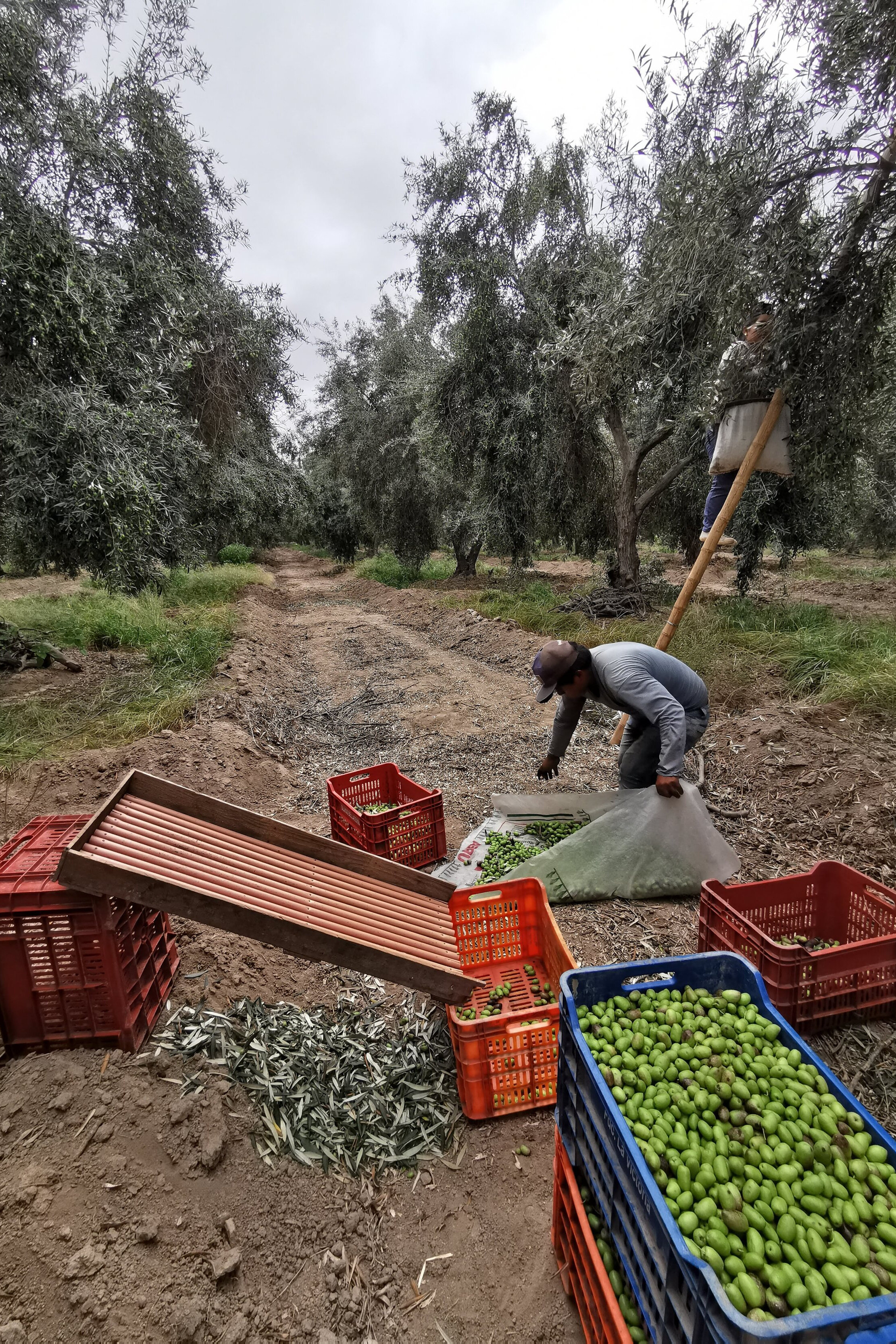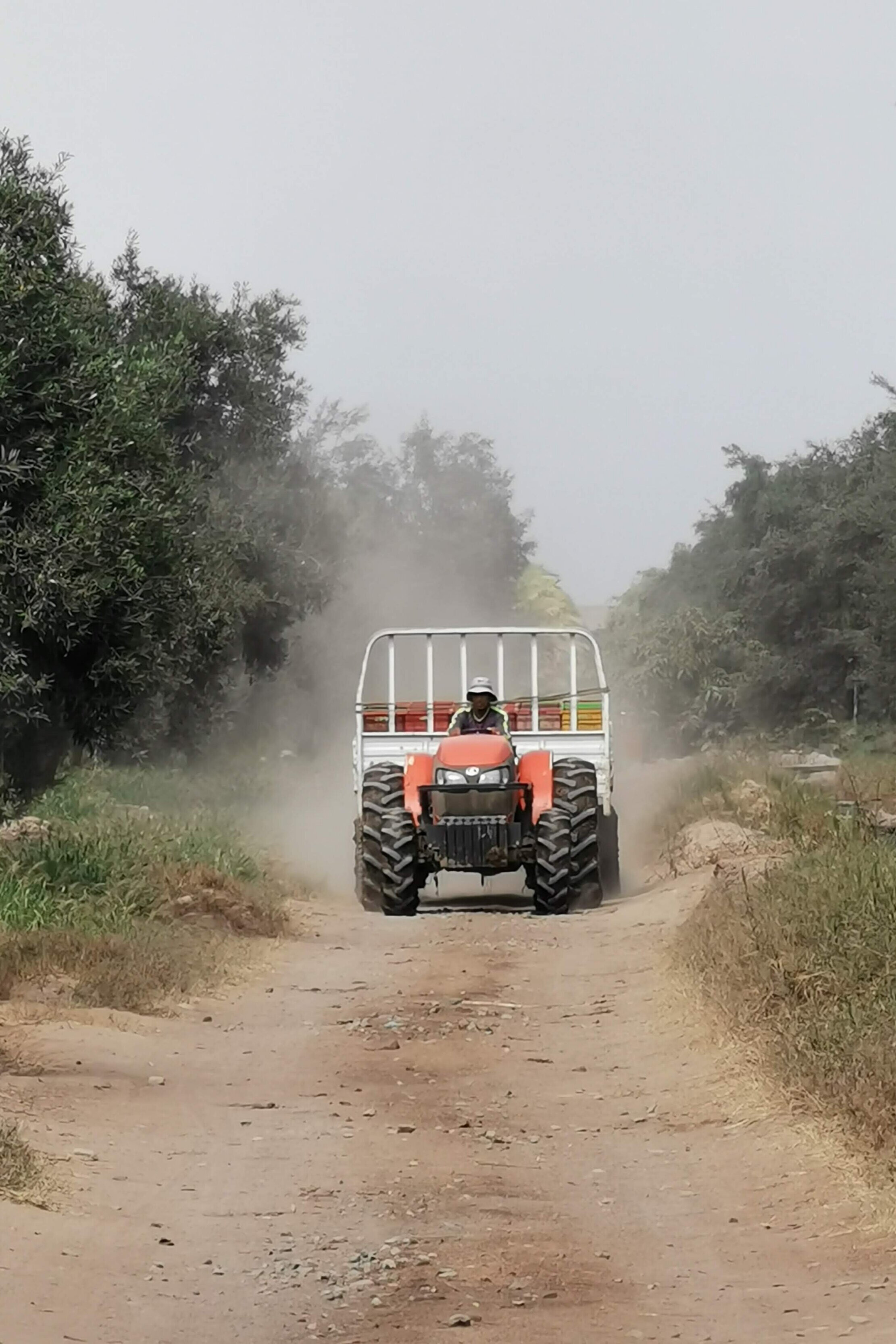Ejemplo aplicado para la simulación de un "doble" nivel freático en Modflow6 y mf6Voronoi sobre un modelo geoespacial. El tutorial cubre los desafíos, técnicas y una discusión sobre la formulación de Newton que permite la simulación de un nivel freático localizado por encima de un nivel freático regional.
Tutorial
Code
#get the latest modflow binary
from mf6Voronoi.utils import initiateOutputFolder
import flopy
from mf6Voronoi.utils import listTemplates, copyTemplatebinDir = '../bin'
initiateOutputFolder(binDir)The output folder ../bin has been generated.flopy.utils.get_modflow(binDir, subset=['mf6'])fetched release '23.0' info from MODFLOW-ORG/executables
downloading 'https://github.com/MODFLOW-ORG/executables/releases/download/23.0/win64.zip' to 'C:\Users\saulm\Downloads\modflow_executables-23.0-win64.zip'
extracting 1 file to 'C:\Users\saulm\Documents\modelPerchedAquifersMF6voronoi\bin'
mf6.exe (6.6.3)
wrote new flopy metadata file: 'C:\Users\saulm\AppData\Local\flopy\get_modflow.json'copyTemplate('generateVoronoi','perched')copyTemplate('multilayeredTransient','perched')Mesh generation
Part 1 : Voronoi mesh generation
import warnings ## Org
warnings.filterwarnings('ignore') ## Org
import os, sys ## Org
import geopandas as gpd ## Org
from mf6Voronoi.geoVoronoi import createVoronoi ## Org
from mf6Voronoi.meshProperties import meshShape ## Org
from mf6Voronoi.utils import initiateOutputFolder, getVoronoiAsShp ## Org#Create mesh object specifying the coarse mesh and the multiplier
vorMesh = createVoronoi(meshName='perchedAquifer',maxRef = 20, multiplier=1.5) ## Org
#Open limit layers and refinement definition layers
vorMesh.addLimit('basin','../shp/modelLimit.shp') ## <=== updated
vorMesh.addLayer('ref','../shp/refArea.shp',8) ## <=== updated
vorMesh.addLayer('regionalFlow','../shp/regionalFlow.shp',8) ## <=== updated#Generate point pair array
vorMesh.generateOrgDistVertices() ## Org
#Generate the point cloud and voronoi
vorMesh.createPointCloud() ## Org
vorMesh.generateVoronoi() ## OrgFollow us: |
|
|
|
|
|
|
/--------Layer ref discretization-------/
Progressive cell size list: [8, 20.0] m.
/--------Layer regionalFlow discretization-------/
Progressive cell size list: [8, 20.0] m.
/----Sumary of points for voronoi meshing----/
Distributed points from layers: 2
Points from layer buffers: 938
Points from max refinement areas: 683
Points from min refinement areas: 2294
Total points inside the limit: 4150
/--------------------------------------------/
Time required for point generation: 0.52 seconds
/----Generation of the voronoi mesh----/
Time required for voronoi generation: 0.40 seconds#Uncomment the next two cells if you have strong differences on discretization or you have encounter an FORTRAN error while running MODFLOW6vorMesh.checkVoronoiQuality(threshold=0.01)/----Performing quality verification of voronoi mesh----/
Short side on polygon: 4149 with length = 0.00028
Short side on polygon: 4149 with length = 0.00028vorMesh.fixVoronoiShortSides()
vorMesh.generateVoronoi()
vorMesh.checkVoronoiQuality(threshold=0.01)/----Generation of the voronoi mesh----/
Time required for voronoi generation: 0.47 seconds
/----Performing quality verification of voronoi mesh----/
Your mesh has no edges shorter than your threshold#Export generated voronoi mesh
initiateOutputFolder('../output') ## Org
getVoronoiAsShp(vorMesh.modelDis, shapePath='../output/'+vorMesh.modelDis['meshName']+'.shp') ## OrgThe output folder ../output exists and has been cleared
/----Generation of the voronoi shapefile----/
Time required for voronoi shapefile: 0.93 seconds# Show the resulting voronoi mesh
#open the mesh file
mesh=gpd.read_file('../output/'+vorMesh.modelDis['meshName']+'.shp') ## Org
#plot the mesh
mesh.plot(figsize=(35,25), fc='crimson', alpha=0.3, ec='teal') ## OrgPart 2 generate disv properties
# open the mesh file
mesh=meshShape('../output/'+vorMesh.modelDis['meshName']+'.shp') ## Org# get the list of vertices and cell2d data
gridprops=mesh.get_gridprops_disv() ## OrgCreating a unique list of vertices [[x1,y1],[x2,y2],...]
100%|███████████████████████████████████████████████████████████████████████████| 4151/4151 [00:00<00:00, 18468.51it/s]
Extracting cell2d data and grid index
100%|████████████████████████████████████████████████████████████████████████████| 4151/4151 [00:01<00:00, 2428.66it/s]#create folder
initiateOutputFolder('../json') ## Org
#export disv
mesh.save_properties('../json/disvDict.json') ## OrgThe output folder ../json exists and has been clearedMultilayer and transient model
Part 2a: generate disv properties
import sys, json, os ## Org
import rasterio, flopy ## Org
import numpy as np ## Org
import matplotlib.pyplot as plt ## Org
import geopandas as gpd ## Org
from mf6Voronoi.meshProperties import meshShape ## Org
from shapely.geometry import MultiLineString ## Org
from mf6Voronoi.tools.cellWork import getLayCellElevTupleFromRaster, getLayCellElevTupleFromElev# open the json file
with open('../json/disvDict.json') as file: ## Org
gridProps = json.load(file) ## Orgcell2d = gridProps['cell2d'] #cellid, cell centroid xy, vertex number and vertex id list
vertices = gridProps['vertices'] #vertex id and xy coordinates
ncpl = gridProps['ncpl'] #number of cells per layer
nvert = gridProps['nvert'] #number of verts
centroids=gridProps['centroids'] #cell centroids xyPart 2b: Model construction and simulation
#Extract dem values for each centroid of the voronois
src = rasterio.open('../rst/modelDem.tif') ## Org
elevation=[x for x in src.sample(centroids)] ## Orgnlay = 20 ## Org
mtop=np.array([elev[0] for i,elev in enumerate(elevation)]) ## Org
zbot=np.zeros((nlay,ncpl)) ## Org
AcuifInf_Bottom = 2300 ## Org
zbot[0,] = AcuifInf_Bottom + (0.95 * (mtop - AcuifInf_Bottom)) ## Org
zbot[1,] = AcuifInf_Bottom + (0.9 * (mtop - AcuifInf_Bottom)) ## Org
zbot[2,] = AcuifInf_Bottom + (0.875 * (mtop - AcuifInf_Bottom)) ## Org
zbot[3,] = AcuifInf_Bottom + (0.85 * (mtop - AcuifInf_Bottom)) ## Org
zbot[4,] = AcuifInf_Bottom + (0.825 * (mtop - AcuifInf_Bottom)) ## Org
zbot[5,] = AcuifInf_Bottom + (0.8 * (mtop - AcuifInf_Bottom)) ## Org
zbot[6,] = AcuifInf_Bottom + (0.775 * (mtop - AcuifInf_Bottom)) ## Org
zbot[7,] = AcuifInf_Bottom + (0.75 * (mtop - AcuifInf_Bottom)) ## Org
zbot[8,] = AcuifInf_Bottom + (0.725 * (mtop - AcuifInf_Bottom)) ## Org
zbot[9,] = AcuifInf_Bottom + (0.7 * (mtop - AcuifInf_Bottom)) ## Org
zbot[10,] = AcuifInf_Bottom + (0.675 * (mtop - AcuifInf_Bottom)) ## Org
zbot[11,] = AcuifInf_Bottom + (0.65 * (mtop - AcuifInf_Bottom)) ## Org
zbot[12,] = AcuifInf_Bottom + (0.625 * (mtop - AcuifInf_Bottom)) ## Org
zbot[13,] = AcuifInf_Bottom + (0.6 * (mtop - AcuifInf_Bottom)) ## Org
zbot[14,] = AcuifInf_Bottom + (0.5 * (mtop - AcuifInf_Bottom)) ## Org
zbot[15,] = AcuifInf_Bottom + (0.4 * (mtop - AcuifInf_Bottom)) ## Org
zbot[16,] = AcuifInf_Bottom + (0.3 * (mtop - AcuifInf_Bottom)) ## Org
zbot[17,] = AcuifInf_Bottom + (0.2 * (mtop - AcuifInf_Bottom)) ## Org
zbot[18,] = AcuifInf_Bottom + (0.1 * (mtop - AcuifInf_Bottom)) ## Org
zbot[19,] = AcuifInf_Bottom ## OrgCreate simulation and model
# create simulation
simName = 'mf6Sim' ## Org
modelName = 'mf6Model' ## Org
modelWs = '../modelFiles' ## Org
sim = flopy.mf6.MFSimulation(sim_name=modelName, version='mf6', ## Org
exe_name='../bin/mf6.exe', ## Org
continue_=True,
sim_ws=modelWs) ## Org# create tdis package
tdis_rc = [(86400*365*80,1,1)]+[(86400*365*30, 3, 1.5) for level in range(2)]
print(tdis_rc[:3]) ## Org
tdis = flopy.mf6.ModflowTdis(sim, pname='tdis', time_units='SECONDS', ## Org
perioddata=tdis_rc, ## Org
nper=3) ## Org[(2522880000, 1, 1), (946080000, 3, 1.5), (946080000, 3, 1.5)]# create gwf model
gwf = flopy.mf6.ModflowGwf(sim, ## Org
modelname=modelName, ## Org
save_flows=True, ## Org
newtonoptions="NEWTON UNDER_RELAXATION") ## Org# create iterative model solution and register the gwf model with it
ims = flopy.mf6.ModflowIms(sim, ## Org
complexity='COMPLEX', ## Org
outer_maximum=150, ## Org
inner_maximum=50, ## Org
outer_dvclose=0.1, ## Org
inner_dvclose=0.0001, ## Org
backtracking_number=20, ## Org
linear_acceleration='BICGSTAB') ## Org
sim.register_ims_package(ims,[modelName]) ## Org# disv
disv = flopy.mf6.ModflowGwfdisv(gwf, nlay=nlay, ncpl=ncpl, ## Org
top=mtop, botm=zbot, ## Org
nvert=nvert, vertices=vertices, ## Org
cell2d=cell2d) ## Orgdisv.top.plot(figsize=(12,8), alpha=0.8) ## OrgcrossSection = gpd.read_file('../shp/crossSection.shp') ## Org
sectionLine =list(crossSection.iloc[0].geometry.coords) ## Org
fig, ax = plt.subplots(figsize=(12,8)) ## Org
modelxsect = flopy.plot.PlotCrossSection(model=gwf, line={'Line': sectionLine}) ## Org
linecollection = modelxsect.plot_grid(lw=0.5) ## Org
ax.grid() ## Org# initial conditions
ic = flopy.mf6.ModflowGwfic(gwf, strt=np.stack([mtop for i in range(nlay)])) ## Org
#headsInitial = np.load('npy/headCalibInitial.npy')
#ic = flopy.mf6.ModflowGwfic(gwf, strt=headsInitial)KxArray = np.ones((nlay, ncpl)) * 4e-4
KxArray[1:6] = 5e-6
KxArray[6:15] = 3e-6
KxArray[15:] = 7e-7
icelltype = [1 for x in range(15)] + [0 for x in range(nlay - 15)]
interIx = flopy.utils.gridintersect.GridIntersect(gwf.modelgrid) ## Org
layCellTupleList = getLayCellElevTupleFromElev(gwf,
interIx,
2400,
'../shp/impermeableLens.shp')
for layCellTuple in layCellTupleList:
KxArray[layCellTuple[0],layCellTuple[1]] = 1e-10
KxArray[layCellTuple[0]+1,layCellTuple[1]] = 1e-10
# node property flow
npf = flopy.mf6.ModflowGwfnpf(gwf, ## Org
save_specific_discharge=True, ## Org
icelltype=icelltype, ## Org
k=KxArray, ## Org
k33=KxArray) ## OrgYou have inserted a fixed elevationcrossSection = gpd.read_file('../shp/crossSection.shp') ## Org
sectionLine =list(crossSection.iloc[0].geometry.coords) ## Org
fig, ax = plt.subplots(figsize=(12,8)) ## Org
modelxsect = flopy.plot.PlotCrossSection(model=gwf, line={'Line': sectionLine}) ## Org
linecollection = modelxsect.plot_grid(lw=0.5) ## Org
modelxsect.plot_array(np.log(npf.k.array), cmap='autumn')
ax.grid() ## Org# define storage and transient stress periods
sto = flopy.mf6.ModflowGwfsto(gwf, ## Org
iconvert=1, ## Org
steady_state={ ## Org
0:False, ## Org
},
transient={
0:True, ## Org
1:True, ## Org
2:True, ## Org
},
ss=1e-06,
sy=0.001,
) ## OrgWorking with rechage, evapotranspiration
rchr = 0.2/365/86400 ## Org
rch = flopy.mf6.ModflowGwfrcha(gwf, recharge=rchr) ## Org
evtr = 1.2/365/86400 ## Org
evt = flopy.mf6.ModflowGwfevta(gwf,ievt=1,surface=mtop,rate=evtr,depth=1.0) ## OrgDefinition of the intersect object
For the manipulation of spatial data to determine hydraulic parameters or boundary conditions
# Define intersection object
interIx = flopy.utils.gridintersect.GridIntersect(gwf.modelgrid) ## Org#regional flow package
ghbDf = gpd.read_file('../shp/regionalFlow.shp')
ghbDf| FID | Elev | geometry | |
|---|---|---|---|
| 0 | 0.0 | 2380 | LINESTRING (-2631221.561 5121955.296, -2631223... |
| 1 | 1.0 | 2370 | LINESTRING (-2630546.781 5122056.513, -2630945... |
| 2 | NaN | 2360 | LINESTRING (-2630479.303 5121538.693, -2630483... |
ghbSpd = {} ## Org
ghbSpd[0] = [] ## Org
for index , row in ghbDf.iterrows():
ghbGeom = row.geometry
layCellTupleList = getLayCellElevTupleFromElev(gwf,interIx,row.Elev,ghbGeom)
for index, layCellTuple in enumerate(layCellTupleList): ## <=== updated
for lay in range(layCellTuple[0],nlay):
ghbSpd[0].append([(lay,layCellTuple[1]),row.Elev,0.01]) ## <=== updated
ghbSpd[0][-10:]You have inserted a fixed elevation
You have inserted a fixed elevation
You have inserted a fixed elevation
[[(10, 4122), 2360, 0.01],
[(11, 4122), 2360, 0.01],
[(12, 4122), 2360, 0.01],
[(13, 4122), 2360, 0.01],
[(14, 4122), 2360, 0.01],
[(15, 4122), 2360, 0.01],
[(16, 4122), 2360, 0.01],
[(17, 4122), 2360, 0.01],
[(18, 4122), 2360, 0.01],
[(19, 4122), 2360, 0.01]]ghb = flopy.mf6.ModflowGwfghb(gwf, stress_period_data=ghbSpd)
#regional flow plot
ghb.plot(mflay=4, kper=0) ## <===== modifiedSet the Output Control and run simulation
#oc
head_filerecord = f"{gwf.name}.hds" ## Org
budget_filerecord = f"{gwf.name}.cbc" ## Org
oc = flopy.mf6.ModflowGwfoc(gwf, ## Org
head_filerecord=head_filerecord, ## Org
budget_filerecord = budget_filerecord, ## Org
saverecord=[("HEAD", "LAST"),("BUDGET","LAST")]) ## Org# Run the simulation
sim.write_simulation() ## Org
success, buff = sim.run_simulation() ## Orgwriting simulation...
writing simulation name file...
writing simulation tdis package...
writing solution package ims_-1...
writing model mf6Model...
writing model name file...
writing package disv...
writing package ic...
writing package npf...
writing package sto...
writing package rcha_0...
writing package evta_0...
writing package ghb_0...
INFORMATION: maxbound in ('gwf6', 'ghb', 'dimensions') changed to 1421 based on size of stress_period_data
writing package oc...
FloPy is using the following executable to run the model: ..\bin\mf6.exe
MODFLOW 6
U.S. GEOLOGICAL SURVEY MODULAR HYDROLOGIC MODEL
VERSION 6.6.3 09/29/2025
MODFLOW 6 compiled Oct 07 2025 23:07:48 with Intel(R) Fortran Intel(R) 64
Compiler Classic for applications running on Intel(R) 64, Version 2021.7.0
Build 20220726_000000
This software has been approved for release by the U.S. Geological
Survey (USGS). Although the software has been subjected to rigorous
review, the USGS reserves the right to update the software as needed
pursuant to further analysis and review. No warranty, expressed or
implied, is made by the USGS or the U.S. Government as to the
functionality of the software and related material nor shall the
fact of release constitute any such warranty. Furthermore, the
software is released on condition that neither the USGS nor the U.S.
Government shall be held liable for any damages resulting from its
authorized or unauthorized use. Also refer to the USGS Water
Resources Software User Rights Notice for complete use, copyright,
and distribution information.
MODFLOW runs in SEQUENTIAL mode
Run start date and time (yyyy/mm/dd hh:mm:ss): 2025/11/03 16:12:36
Writing simulation list file: mfsim.lst
Using Simulation name file: mfsim.nam
Solving: Stress period: 1 Time step: 1
Solving: Stress period: 2 Time step: 1
Solving: Stress period: 2 Time step: 2
Solving: Stress period: 2 Time step: 3
Solving: Stress period: 3 Time step: 1
Solving: Stress period: 3 Time step: 2
Solving: Stress period: 3 Time step: 3
Run end date and time (yyyy/mm/dd hh:mm:ss): 2025/11/03 16:12:58
Elapsed run time: 21.973 Seconds
Normal termination of simulation.Model output visualization
headObj = gwf.output.head() ## Org
headObj.get_kstpkper() ## Org[(np.int32(0), np.int32(0)),
(np.int32(2), np.int32(1)),
(np.int32(2), np.int32(2))]kper = 2 ## Org
nstp = 2
lay = 0 ## Orgheads = headObj.get_data(kstpkper=(nstp,kper))
waterTable = flopy.utils.postprocessing.get_water_table(heads)
#heads[lay,0,:5]
#heads = headObj.get_data(kstpkper=(0,0))
#np.save('npy/headCalibInitial', heads)### Plot the heads for a defined layer and boundary conditions
fig = plt.figure(figsize=(12,8)) ## Org
ax = fig.add_subplot(1, 1, 1, aspect='equal') ## Org
modelmap = flopy.plot.PlotMapView(model=gwf) ## Org
####
levels = np.linspace(heads[heads>-1e+30].min(),heads[heads>-1e+30].max(),num=50) ## Org
contour = modelmap.contour_array(waterTable,ax=ax,levels=levels,cmap='PuBu')
ax.clabel(contour) ## Org
quadmesh = modelmap.plot_bc('GHB') ## Org
cellhead = modelmap.plot_array(heads[lay],ax=ax, cmap='Blues', alpha=0.8)
linecollection = modelmap.plot_grid(linewidth=0.3, alpha=0.5, color='cyan', ax=ax) ## Org
plt.colorbar(cellhead, shrink=0.75) ## Org
plt.show() ## OrgcrossSection = gpd.read_file('../shp/crossSection.shp')
sectionLine =list(crossSection.iloc[0].geometry.coords)
waterTable = flopy.utils.postprocessing.get_water_table(heads)
fig, ax = plt.subplots(figsize=(12,8))
xsect = flopy.plot.PlotCrossSection(model=gwf, line={'Line': sectionLine})
lc = modelxsect.plot_grid(lw=0.5)
xsect.plot_array(heads, alpha=0.5)
xsect.plot_surface(waterTable)
xsect.plot_surface(heads[15])
xsect.plot_bc('ghb', kper=kper, facecolor='none', edgecolor='teal')
xsect.plot_grid(lw=0.1)
ax.axis('off')
plt.show()Datos de ingreso
Puede descargar los datos de ingreso desde este link:
owncloud.hatarilabs.com/s/l2WH5jNVKCuCfvu

